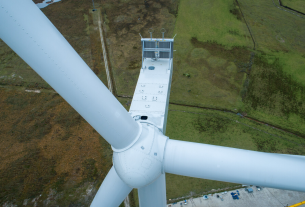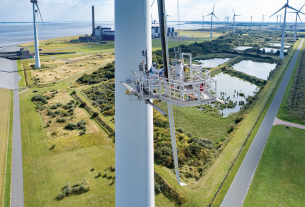United Kingdom – Scientists at the University of Aberdeen are working on a system that will allow industrial carbon emissions and electricity produced by renewable sources to be “banked” as green hydrogen in depleted oil and gas reserves.
The project presents a special opportunity to assist Scotland in meeting its hydrogen production ambitions and offers the potential for Scotland to become a net exporter of hydrogen by allowing the safe and efficient storage of massive quantities of hydrogen and CO2.
In addition to giving depleting oil and gas reservoirs and aquifers, as well as the pipeline and well infrastructure that surrounds them, a fresh lease of life, the research may play a significant role in assisting Scotland in realizing its net zero objectives and potentially becoming a net exporter of hydrogen.
Hydrogen role
By enabling the extra electricity to be converted to green hydrogen and stored for later use, it might also lower the constraint payments provided to wind farm owners to force them to stop producing electricity when production is too high. The National system’s capacity to handle higher power generation as more renewable energy projects come online was recently brought up in an independent study to the UK Government, highlighting the potential advantages of the ongoing research in reducing system stress. Furthermore, the Hydrogen Backbone Link project, which is supported by the Scottish Government, has highlighted the significant role that hydrogen may play in Scotland’s plans to become a net exporter of green energy.
Project support
The projects are being led by Dr. Prashant Jadhawar from the University’s School of Engineering. They have received funding from the Net Zero Technology Centre’s (NZTC) Net Zero R&D Programme, which is supported by a number of commercial partners, including a number of UKCS North Sea Operators, Scottish Gas Network, BatiGea, UK Elixir consultants and Flow Expertise, UK.
In order to create digital tools that will make it possible to transport hydrogen to homes and businesses, the first phase of these projects, which is already under way, evaluates the most efficient ways to transport hydrogen through the onshore and offshore North Sea pipeline network using a combination of modeling, simulation, and laboratory experimentation.
Game-changer
Additionally, it is looking into the co-storage of hydrogen and carbon dioxide, with CO2 serving as a “cushion” gas, in depleted hydrocarbon resources and aquifers. Although this method has never been tried before, it might be used to store CO2 and blue hydrogen on a big scale. The second stage, which aims to advance the technology, will concentrate on field tests and commercialization through possible spin-off firm formation.
According to Dr. Jadhawar, the development of these technologies has the potential to be a “game-changer” and could significantly aid Scotland in achieving its goal of producing 5 GW of clean, low-carbon hydrogen by 2030, which is equal to a sixth of the nation’s energy requirements.




